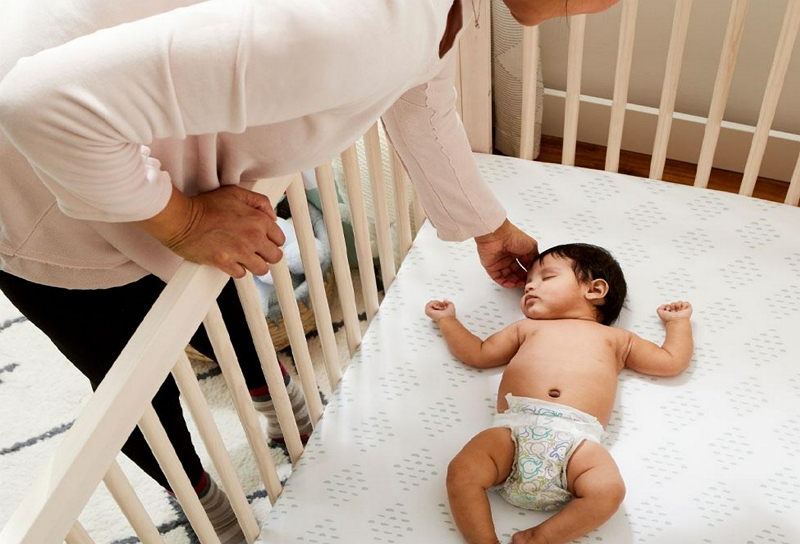Diapers are a necessity for any new baby. They can be expensive, but how do they work? Diapers have been around since the 1930s and have gone through many changes.
Today, there are disposable diapers as well as cloth or reusable ones. In this blog post, we will talk about how diapers work and how to choose the best one for your family!

Ways How Diapers Work
All diapers rely on the same basic principle. They consist of a thin layer that wraps around your baby’s waist and between his legs, which is designed to hold liquids.
These diapers are either absorbent or water-resistant; depending on what you choose will determine how quickly they can soak up messes without leaking through onto bedding or clothes.
The most popular material for disposable diaper inserts is wood pulp fiber, which absorbs lots of liquid but won’t swell too much in size once dried out again. This ensures nothing leaks through even when they do get wet inside.
Many modern disposables also feature an elastic band at each leg opening to help contain any explosive accidents until you can change him into dry clothing.
Some brands use special “fast-absorbing” materials in their inserts to speed up the process, but all diapers essentially work in the same way.
Types of Diapers:
There are different types of diapers to choose from – disposable or cloth. Disposable diapers can either be bought pre-folded and ready to use, or you can buy them in bulk and fold them yourself. They come in a variety of sizes, so it’s important that you get the right size for your baby.
Cloth diapers can be made out of any number of fabrics, including flannel, terrycloth, and hemp. They usually require a waterproof cover to keep moisture from seeping through onto clothing or bedding, they need to be laundered after each use, and they may take a bit more time to put on.
What Is The Science Behind A Diaper?
A diaper is a garment worn by a baby or toddler that catches excrement. The purpose of a diaper is to absorb liquid and fecal matter so that it does not dirty the child’s clothing, furniture, or the floor. A diaper also serves to protect the child’s skin from feces and urine.
The secret, water-absorbing chemical in a diaper is called sodium polyacrylate. This polymer-filled pad expands in the presence of moisture to absorb and hold a lot of liquid by effectively bonding with it.
Polymers are simply long chains of repeating molecules. When liquid and polymer come into contact with one another, the individual molecules of the polymer hold on and grab onto the liquid by thoroughly biding to it.
Do Diapers Keep Baby Dry?
Super-absorbent overnight diapers offer a lot more protection and help your baby to stay dry all night long. Regular diapers can often become too soaked outdoors so wetness will no longer pose a problem and you’ll be able to in turn give your little one the sleep they need to grow.
What Is Inside A Disposable Diaper?
A disposable diaper is made of paper, wood pulp, plastic, and super absorbent material usually sodium polyacrylate – a compound that can soak up to 30 times its weight in urine.
There are other ingredients in a diaper that vary depending on the brand you buy. Sometimes you will find a fragrance that helps mask the smell if your baby has soiled their diaper while sometimes it can cause rashes or allergic reactions for some babies.
You should always read the label to see what ingredients are inside because certain chemicals used in diapers have been known to be linked with cancer risks.
How Does Diaper Turn Blue?
The blue dye in diapers is a strong indicator of when the diaper needs to be changed. The dye changes color when it comes into contact with urine, which can turn the diaper blue.
This helps caregivers and parents know when it’s time to change the diaper, even if they can’t see any evidence of leaks or wetness. By changing diapers frequently, you can help keep your baby comfortable and dry.
Should We Change Diaper After Every Poop?
If your baby typically poops once every few days, then you may not need to change their diaper after every poop. However, if your baby goes more often than that – or if they tend to produce messy diapers – it might be wise to change them more regularly.
Likewise, if you’re using cloth diapers which can be harder to clean when they are soiled, it might make sense to change them more often. Ultimately, it’s up to you and your partner to decide what’s best for your family.
Whatever you decide, it’s important to be consistent with your routine. This will help make diaper changing less of a chore and will give your baby (and you!) some stability during this exciting but sometimes challenging time. Happy diapering.
How Tight Should A Diaper Be?
There is no definitive answer to this question. Some babies prefer a snugger fit, others like their diapers looser. As a general rule, you should aim for a tight enough fit that the diaper does not sag or bunch up, but not so tight that it causes red marks or discomfort.
If your baby seems uncomfortable or the diaper is sagging, it may be too loose. If the diaper is constantly coming off or leaking, it may be too tight. In either case, adjust the fit as needed until you find what works best for your child.
As your baby grows and changes, you may need to adjust the fit of their diapers on a regular basis. Pay attention to how they are reacting to the diaper and make changes as needed.
